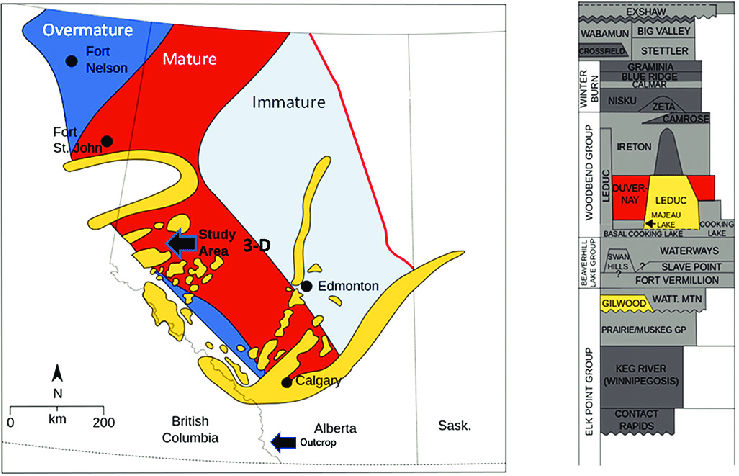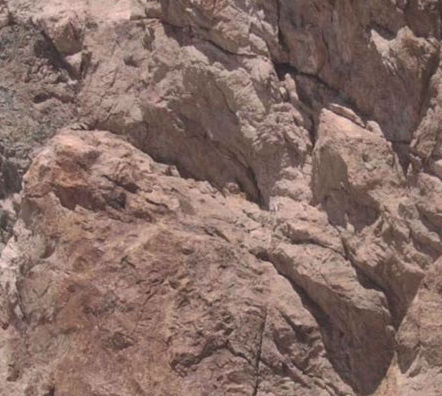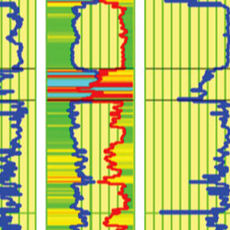
Bakken Regional Shale Study - Consultation

Share
Description of Consultation
Bakken Regional Shale Study
Analysis of 76 wells
The Bakken Formation is the largest continuous crude oil accumulation in the United States.
This study provides insight into the connectivity of textural attributes of the wells.
The Bakken Formation (Late Devonian to Early Mississippian) covers approximately 200,000 square miles across western North Dakota, eastern Montana, and southern Saskatchewan, Canada within the Williston Basin. The Bakken lies between the overlying Lodgepole Formation, which is conformable in most areas, and the underlying Three Forks Formation, which is unconformable. The formation was initially described by geologist J.W. Nordquist in 1953. The formation is entirely in the subsurface, and has no surface outcrop. It is named after Henry Bakken, a farmer in Tioga, North Dakota who owned the land where the formation was initially discovered, during drilling for oil.
The Bakken Formation consists of three distinct members. The upper and lower members are black, organic-rich shales and are widely recognized as world-class source rocks. These members also serve as very effective seals owing to their very low permeability. Permeability ranges from 0.01 mD to 20 mD. The middle member is the primary oil-producing member and predominantly composed of siltstones and sandstones, but also has low porosity (1% – 15%) and permeability (0 – 20 millidarcies), particularly for a reservoir rock. The shales were deposited in relatively deep anoxic marine conditions, and the dolomite was deposited as a coastal carbonate bank during a time of shallower.
Because of the strong contrast in lithology, the Bakken Formation is readily recognizable in wireline logs. The upper and lower shales have unusually high gamma ray readings and high resistivity, while the middle member has a signature similar to clastic and carbonate rocks.
The application of hydraulic fracturing and horizontal drilling technologies has created a boom in Bakken production since 2000. The presence of vertical to sub-vertical natural fractures makes the Bakken an excellent candidate for horizontal drilling in which a well drills horizontally along bedding planes, rather than vertically through them. In this way, a borehole can contact many thousands of feet of oil reservoir rock in a unit with a maximum thickness of only about 140 feet. By the end of 2010, oil production rates had reached 458,000 barrels per day.
Deliverables
Reservoir Potential Evaluation
NULOOK® Shale Analysis
- 76 wells
NUSTIM® Geomechanical Analysis
- 76 wells
NUVIEW® 2D Attribute Mapping
- Formation Parameters
- Petrophysical Parameters
- Fluid Parameters
- Cross Sections
- Geochemical Parameters
What you will get from meeting with me
Bakken Regional Shale Study - Consultation
Things I can do. Things I can offer
Bakken Regional Shale Study - Consultation
My Classification
Energy Service Company,Engineering Company,Consulting Company,Contractor,Sub-Contractor
My Experience Level
Senior

About Steven Roth
Steven Roth joined NuTech in 2000. Prior to his appointment as CEO, Mr. Roth served as Chief Marketing Officer, Chief Operating Officer, Vice President of Sales and Marketing, International Business Development Manager, and as a Senior Account Manager with NuTech.
Mr. Roth graduated from the University of Wisconsin in 1986 with a Bachelor of Science degree in Geology, and later earned his Master of Science degree in Geology from Kansas State University. With more than 36 years of experience in the oil and gas industry, he has also worked as:
- Senior Development Geologist for Stocker Resources, Inc. where duties included developing a 3D reservoir model, identifying new drill well locations for the drilling program, assisting in designing the drilling program for new drill wells. Played a key role in constructing and implementing a petrophysical model for the Inglewood Field, which revolutionized the completion process.
- Senior Exploration Geologist with ARCO International Oil and Gas responsible for geologic duties pertaining to two lease blocks, offshore Gabon, West Africa, which included drilling a $15 Million oil discovery, basin analysis, and prospect generation. Conducted presentations to ARCO management, foreign partners, and Gabonese government officials. Responsible for all phases of geological exploration in onshore and offshore basins throughout world. Beyond West Africa, duties also included regional basin analysis, prospect generation, core description, source rock maturation modeling, interpreting 2D seismic data, and wellsite evaluation. Participated in bid-rounds, data rooms, and farm-out presentations. Involved with projects in Syria, Australia, New Zealand, Myanmar, Vietnam, China, and Russia. Conducted presentations to ARCO management, foreign partners, and government officials.
- Development Geologist with THUMS Long Beach Co. (ARCO) responsible for geologic duties pertaining to the Long Beach Unit, offshore Wilmington Field, which included assisting with the interpretation of a 3D seismic data set. As part of a Reservoir Management Team, duties included working with the reservoir engineers to identify new drilling locations and completion intervals, detailed reservoir volumetric studies, seismic interpretation, and prospect assessment.
Mr. Roth is also a member of the American Association of Petroleum Geologists (AAPG), and the Society of Independent Professional Earth Scientists (SIPES).
Ratings & Reviews
No Ratings & Reviews given yet..
More Consultations From Steven Roth

Delaware Basin Regional Study Bone Spring / Wolfcamp Formations - Consultation

Steven Roth
1500/hr
Similar Consultations (Recommended consultations)


Daly & Inamdar, Advocates
500/hr


JW OILFIELD EQUIPMENT & PUMP LLC
500/hr


GeoIndustry Heat
150/hr


Pan India Consultants Pvt. Ltd.
750/hr


















